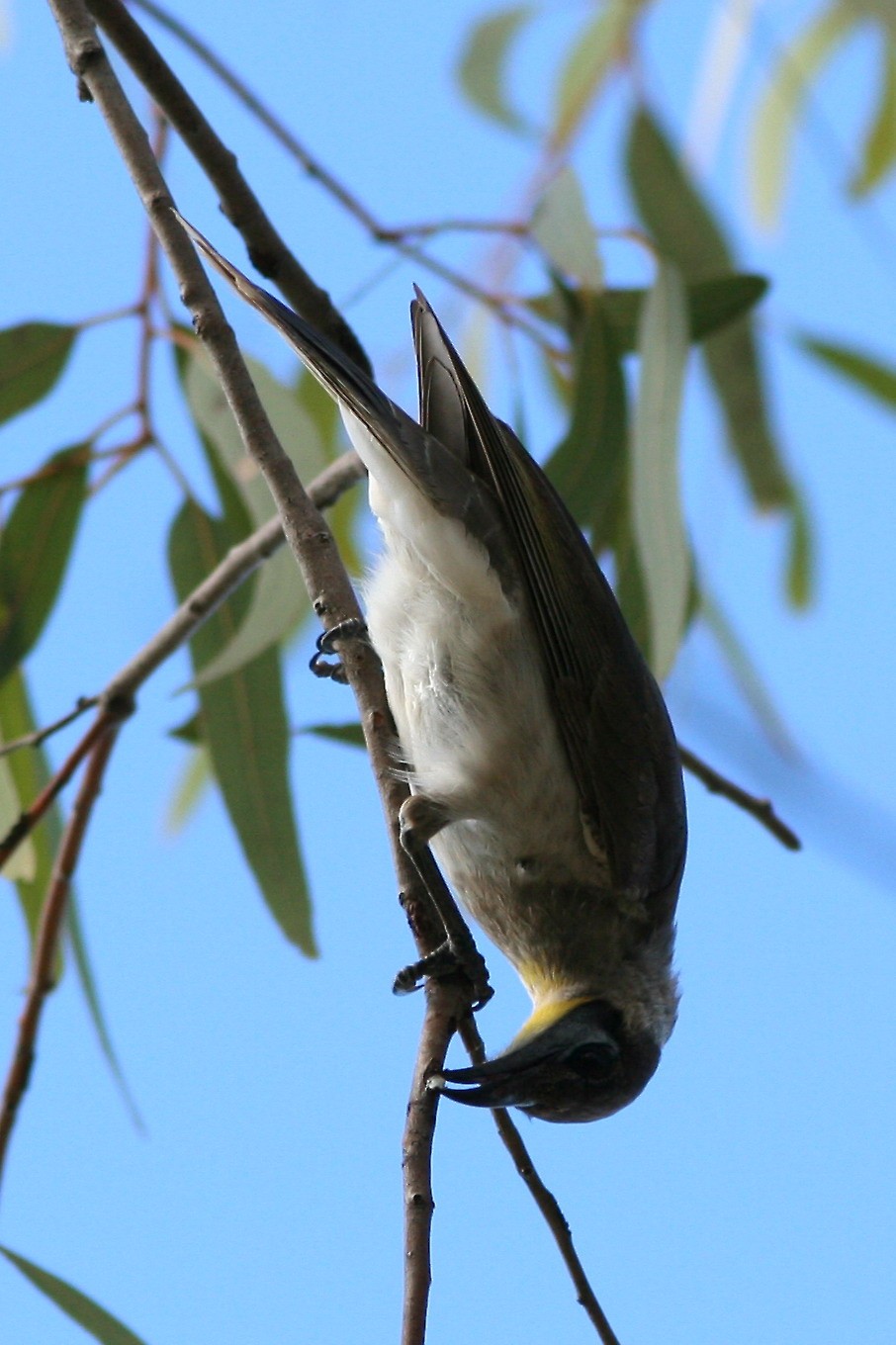Little Friarbird
A species of Friarbirds Scientific name : Philemon citreogularis Genus : Friarbirds
Little Friarbird, A species of Friarbirds
Botanical name: Philemon citreogularis
Genus: Friarbirds
Content
Description General Info
 Photo By Glen Fergus , used under CC-BY-SA-2.5 /Cropped and compressed from original
Photo By Glen Fergus , used under CC-BY-SA-2.5 /Cropped and compressed from original Description
The little friarbird ranges from 25–30 centimetres (9.8–11.8 in) in length. The average size tends to be 27 centimetres (11 in) with an average weight of 67 grams (2.4 oz). Although males and females tend to be very similar in appearance, males are larger. The little friarbird can be easily distinguished from other friarbirds by the absence of a casque (a prominent ridge or bump present on the beak). Another key recognisable feature is the bare blue skin present under the eye which widens over the cheek. (The bare blue skin can vary from grey to black in tone.) Dark feathers are present both above and below the blue skin. The top of the head and body are a dark grey-brown with a dull white fringe present on the nape which flows around to a wide patch on the side of the neck. Fine silky white feathers are present under the chin with silvery white streaks flowing down the breast merging to pale grey for the underbody of the little friarbird. The little friarbird also has a black curved bill, dark brown eyes with bluish black legs. Its flight characteristics involve wing-beats which are shallow and quivering in nature. The tail is clearly square-cut when spread with slight pale tips present on the tail feathers. 
Size
27 cm
Nest Placement
Tree
Feeding Habits
Little Friarbird predominantly feeds on nectar, fruit, and invertebrates, often in mixed-species groups. Rarely ground-feeding, it exhibits tree foraging behavior, sometimes consuming blossoms, seeds, and flowers, exhibiting adaptable feeding behaviors within its arboreal environment.
Habitat
Little Friarbird occupies open woodlands, sclerophyll forests, and water-rich environments like riparian zones within broader regions of northern to south-eastern mainland Australia and southern Papua New Guinea. This species thrives up to elevations of 900 meters in habitats with eucalypt species, grassy shrubs, and in riverine woodlands with dense vegetation. Additionally, little Friarbird adapts to modified landscapes such as parks and agricultural areas.
Dite type
Frugivorous
General Info
Feeding Habits
Bird food type

Fruit
Distribution Area
The little friarbird is present most predominantly in northern Australia with seasonal movements to south-east Australia. They have been witnessed from the district of Broome in Western Australia through the Kimberleys into the northern portion of the Northern Territory. They have been sighted throughout most of Queensland going as far inland as Mount Isa and Opalton. In summer, they also spread throughout the south-east of Australia inhabiting the states of New South Wales, Victoria and South Australia, and the Australian Capital Territory. The little friarbird has been sighted along the Murray River and throughout the Riverina within New South Wales. In Victoria, the little friarbird is seen in the north-central region of the state, and near prominent bodies of water, such as Hattah Lakes. Sightings occur as far as Morgan on the Murray River in South Australia. They are also present in southern Papua New Guinea and on several islands adjacent to Australia. The little friarbird is found most predominantly around water bodies. They can be seen in swamp woodlands, mangroves, shrub communities, open forests and woodlands dominated by Eucalyptus tree species. They also inhabit orchards, vineyards and gardens during a good flowering season. They may also inhabit arid zones, but only where water bodies extend well into the area. 
Species Status
Not globally threatened.
Scientific Classification
Phylum
Chordates Class
Birds Order
Perching birds Family
Honeyeaters Genus
Friarbirds Species
Little Friarbird